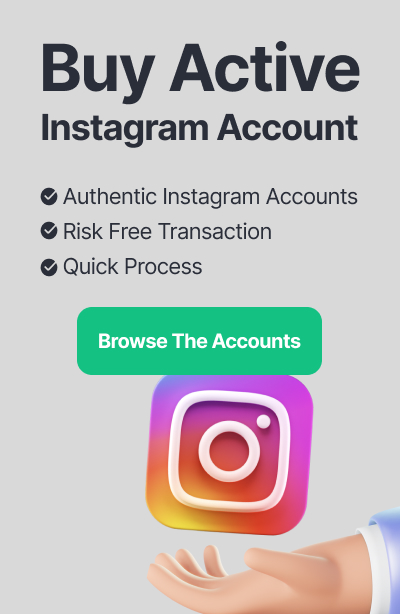5 Effective Ways to Make Money on Instagram as a Food Blogger
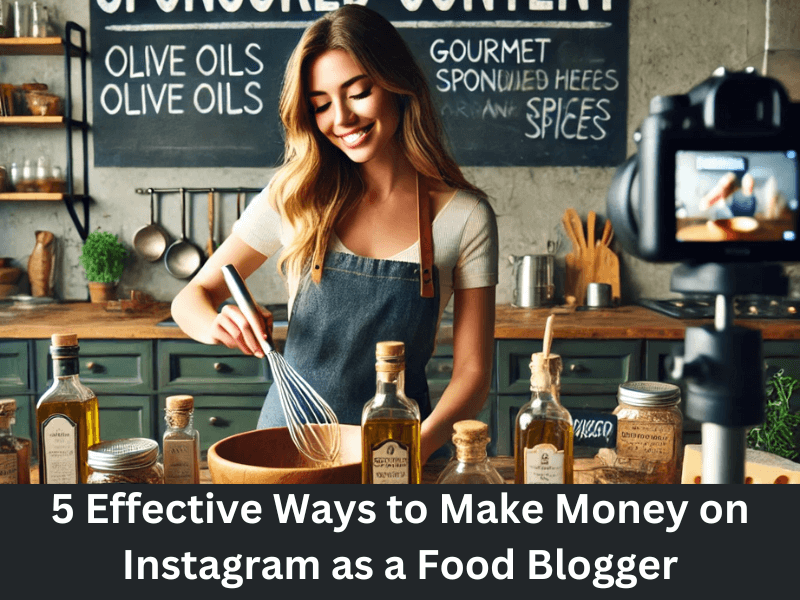
Introduction: How to Make Money on Instagram as a Food Blogger
Instagram is a powerhouse platform for anyone in the food blogging space, and it’s not hard to see why . With over a billion active users, it’s become one of the go-to social platforms for sharing recipes, food pics, and culinary inspiration. Now, if you’re a food blogger trying to make a living, Instagram is your golden ticket, but you have to be strategic about how you use it . This isn’t just about posting mouthwatering food shots anymore—oh no, it’s a whole ecosystem for earning cash. Whether you’re just starting or already have a bit of a following, the potential for making money on Instagram is enormous. There are so many different avenues to explore, from sponsored posts and affiliate marketing to selling your own products . You can turn what used to be just a hobby into a lucrative business. And the best part? You can do it all from your phone!
But before we get into the how-tos, let’s take a moment to appreciate Instagram’s versatility. It’s not only about pretty pictures (though, let’s be honest, those help). It’s about building a brand—your brand. With the right approach, every post, story, and reel you share can be a stepping stone to financial success . It takes time, consistency, and a lot of creativity.
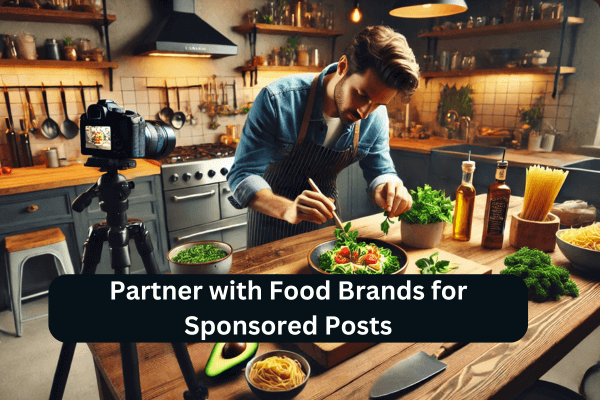
Partner with Food Brands for Sponsored Posts
When it comes to Instagram as a food blogger, landing sponsored posts is like a golden ticket. It’s not just about the likes and comments anymore; it’s about actual dollars coming in from brands that want to partner with you. And trust me, brands are always on the lookout for influencers who can authentically showcase their products in a way that resonates with an engaged audience.
How to Get Sponsored Posts
But here’s the thing — brands won’t come knocking until you’re actively putting yourself out there. You’ve got to be proactive. Reach out to brands you genuinely love and would feel excited to promote. Start by crafting a media kit. It’s like your blogging resume, showcasing your stats, audience demographics, and what you bring to the table. Make it visually appealing but keep it straightforward. Brands are busy, so you want to hit them with the essentials: your reach, engagement rates, and how you can add value to their product.
To secure sponsorships, your content must align with the brand’s image. Here’s a step-by-step guide to attract food brands for paid collaborations:
- Build a Niche-Focused Profile: Create content that reflects a specific niche within the food industry, such as vegan cuisine, desserts, or gourmet meals. Brands prefer working with influencers who cater to a dedicated audience.
- Consistently Post High-Quality Content: Your photos and videos should be visually appealing. Brands want to see that you can present their products in an attractive manner.
- Tag Brands in Your Posts: Start by organically using and tagging food brands in your content. This often leads to brands noticing you and potentially reaching out for collaborations.
- Pitch to Brands: Don’t wait for brands to find you. Proactively reach out to companies by sending a professional media kit and explaining how a collaboration can benefit their brand.
- Use Influencer Marketing Platforms: Platforms like AspireIQ, Tribe, and Influence.co connect influencers with brands seeking sponsored content.
What should you charge for sponsored posts?
This is where many food bloggers get stuck. Here’s a tip: start by calculating your engagement rate. Brands often care more about how engaged your followers are rather than how many you have. A typical rate is $100 per 10k followers, but that’s just a ballpark. If you’ve got a highly engaged, niche audience — say, gluten-free bakers — you might be able to command more. Also, consider the amount of work required. Are they asking for a simple post, or do they want a reel, a carousel of photos, or even an Instagram takeover? All of that impacts your rate. It’s ok to negotiate! Don’t undersell yourself, but also don’t price yourself out of opportunities.
You should also think about adding in deliverables like Instagram Stories, which tend to convert more directly for food brands, or even exclusive recipe content. These are ways to sweeten the deal for both you and the brand.
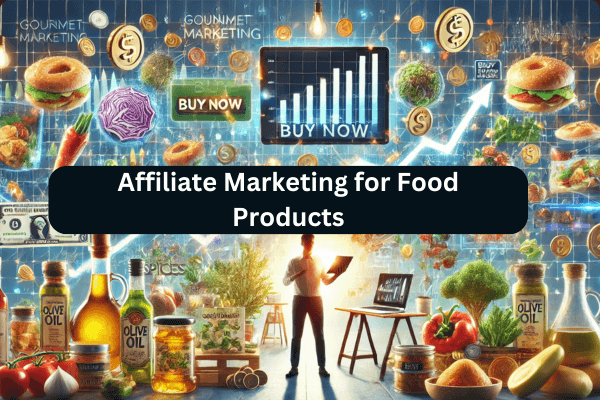
Affiliate Marketing for Food Products
Affiliate marketing is one of the smoothest ways to start monetizing your Instagram account as a food blogger. I mean, why wouldn’t you get paid to talk about ingredients and gadgets you’re already obsessed with, right? If you’ve been around the block on Instagram, you’ve probably come across other creators doing this. It’s straightforward—get a special link from a brand, promote their product, and each time someone buys through your link, you get a cut. Easy peasy, right? Well, sort of.
Affiliate marketing for food bloggers takes a bit of strategy. First off, choosing the right affiliate programs is key. You don’t want to just push any random kitchen gadget or health food, especially if it doesn’t fit your style or resonate with your audience. The trick is finding products that you genuinely use or that fit the culinary niche you’re focusing on. Your followers are smart—they can sniff out an inauthentic recommendation from a mile away. If you’re promoting gluten-free flour, but your recipes are all heavy on bread and butter, there’s a mismatch that’ll turn people off:
- Join Affiliate Programs: Many food brands and retailers offer affiliate programs, such as Amazon Associates, ShareASale, or CJ Affiliate. By signing up, you’ll receive a unique link for each product you promote.
- Promote Products You Use and Love: Authenticity is key in affiliate marketing. Only recommend products you’ve tried and believe in, as your followers trust your opinion.
- Create Engaging Content Around the Products: Instead of simply posting a product, incorporate it into your recipes, cooking tutorials, or meal planning tips. Demonstrating how the product enhances your food content will encourage your followers to purchase through your links.
- Add Links in Your Bio and Stories: Instagram doesn’t allow clickable links in captions, so be sure to use the link in your bio or utilize Instagram Stories’ “swipe up” feature if you have over 10,000 followers.
Choosing the Right Affiliate Programs
So, where to start? Amazon Associates is a no-brainer for food bloggers. Their product range is insane, and you can link to pretty much anything from cookbooks to kitchen tools. Then you’ve got niche-specific programs like Thrive Market, which focuses on organic, health-conscious foods, or companies like Blue Apron that offer meal kits—perfect for food bloggers who post a lot of recipe content.
- High commission rates: Look for affiliate programs offering competitive rates, typically 5% to 20%.
- Product relevance: Ensure the products you promote are closely tied to your niche and cater to your audience’s needs.
- Tracking your success: Regularly analyze your affiliate link performance to understand which products generate the most sales and adjust your strategy accordingly.
Also, keep this in mind: your affiliate links shouldn’t feel like hard sells. No one likes to feel they’re being pushed into buying something, right? Weave them into your content naturally. Maybe you’re making a how-to video on Instagram Stories, and you casually mention the chef’s knife you’re using. Boom—link to it in your bio.

Sell Digital Products like E-Books and Meal Plans
Selling digital products is a fantastic way to create a passive income stream on Instagram, especially if you’re a food blogger with valuable knowledge to share. Think about it—people love convenience, and a well-crafted e-book or a detailed meal plan that saves them time in the kitchen is gold. Your audience already follows you for your food expertise, so why not package that knowledge into something they can buy?
Now, if you’re wondering what digital products to sell, consider creating e-books that compile your top recipes. Go beyond just throwing together a list of dishes—offer themed recipe collections, like “30-Minute Weeknight Dinners” or “Healthy Desserts for Busy People.” Then, there’s meal plans—those are pure magic for anyone struggling to plan their week. You can even tailor them to specific diets like keto, vegan, or gluten-free. People love it when someone else does the thinking for them!
Once you’ve created your product, promoting it on Instagram is where the real fun begins. You’ve got the tools at your fingertips—use Instagram Stories to give sneak peeks into your e-book or meal plan, and use Instagram Shopping so followers can buy right from your page. Highlight customer testimonials, showcase the product in use (cooking a meal from the e-book, for instance), and never underestimate the power of good visuals. Remember, you’re not just selling a product—you’re selling a lifestyle that makes your audience’s lives easier and tastier!
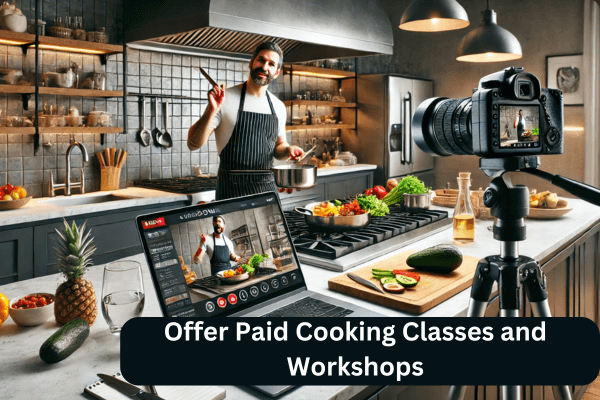
Offer Paid Cooking Classes and Workshops
Teaching cooking classes is a fantastic way to share your culinary skills with your followers while making money. One of the best things about offering cooking classes is that it adds a personal touch to your food content—it transforms passive followers into active participants. People love learning from the experts they admire, and if they follow you for your recipes, chances are, they’d pay to learn your techniques firsthand.
Now, when it comes to organizing these cooking classes, there are a couple of options. You can host virtual classes via Instagram Live, Zoom, or other video platforms, or even set up in-person workshops if you have a local following. In-person workshops can offer that intimate, hands-on experience, which some followers crave, especially when it comes to cooking. But virtual classes? They break down the location barriers and let you reach a global audience—no limits!
Here’s something important: be strategic about the classes you offer. Are your followers interested in quick weeknight dinners, or do they want to perfect their bread-making skills? Know what your audience craves and build your classes around that. You could also offer tiered pricing: a basic class for beginners and a more advanced workshop for those who want to take their culinary skills to the next level.
Also, offering downloadable PDF recipes or shopping lists to accompany your classes is a great way to add extra value. Trust me, followers love tangible resources they can revisit. It shows that you’re thoughtful and thorough.
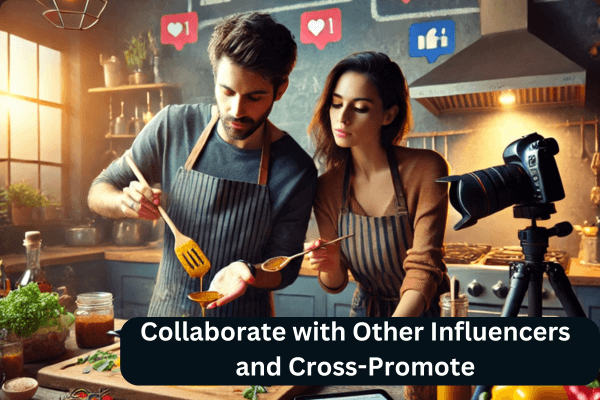
Collaborate with Other Influencers and Cross-Promote
When it comes to growing as a food blogger on Instagram, one strategy that works wonders for both exposure and monetization is collaboration. The food blogging niche is massive, so partnering with other influencers to cross-promote can make a world of difference. You don’t just gain new followers—you build trust with them faster because they’ve been introduced through someone they already know and follow. Plus, the potential for a viral post skyrockets when you team up with another content creator!
The best part? You don’t even have to collaborate with someone who has a million followers. Micro-influencers can be incredibly powerful because they tend to have a loyal, highly engaged audience. When you collaborate, consider joint recipe creations, where you can each bring your unique twist to a dish. Imagine, one person creates the main recipe, and the other provides a side dish or drink pairing! Cross-promoting this kind of content across both accounts can drive tons of engagement and traffic.
Another effective way to collaborate is by featuring each other’s favorite food spots or products in stories. You both get to tap into each other’s audience while providing them with valuable content. Win-win! Tagging each other in these stories allows your followers to easily discover the other person’s page. As a result, you might even land brand deals as companies notice your ability to collaborate smoothly and engage with different audiences.
Now, approaching these influencer collaborations might feel a bit daunting, especially if you’re just starting out, but don’t overthink it. Start by interacting with them—like, comment, share their content—and gradually build a rapport. Once you’ve established some connection, reach out with a specific idea in mind, something that brings value to both parties. Keep it professional yet friendly—being genuine goes a long way!
Conclusion: Make Money on Instagram as a Food Blogger
Instagram offers food bloggers an incredible platform to not only share their passion for food but also to create a thriving business. By strategically partnering with brands for sponsored posts, embracing affiliate marketing, selling digital products, offering cooking classes, and collaborating with other influencers, food bloggers can turn their social media presence into a diverse revenue stream. It’s about more than just beautiful food photos—it’s about creating value, fostering engagement, and building a brand that resonates with your audience, all while tapping into Instagram’s vast potential for financial success.

